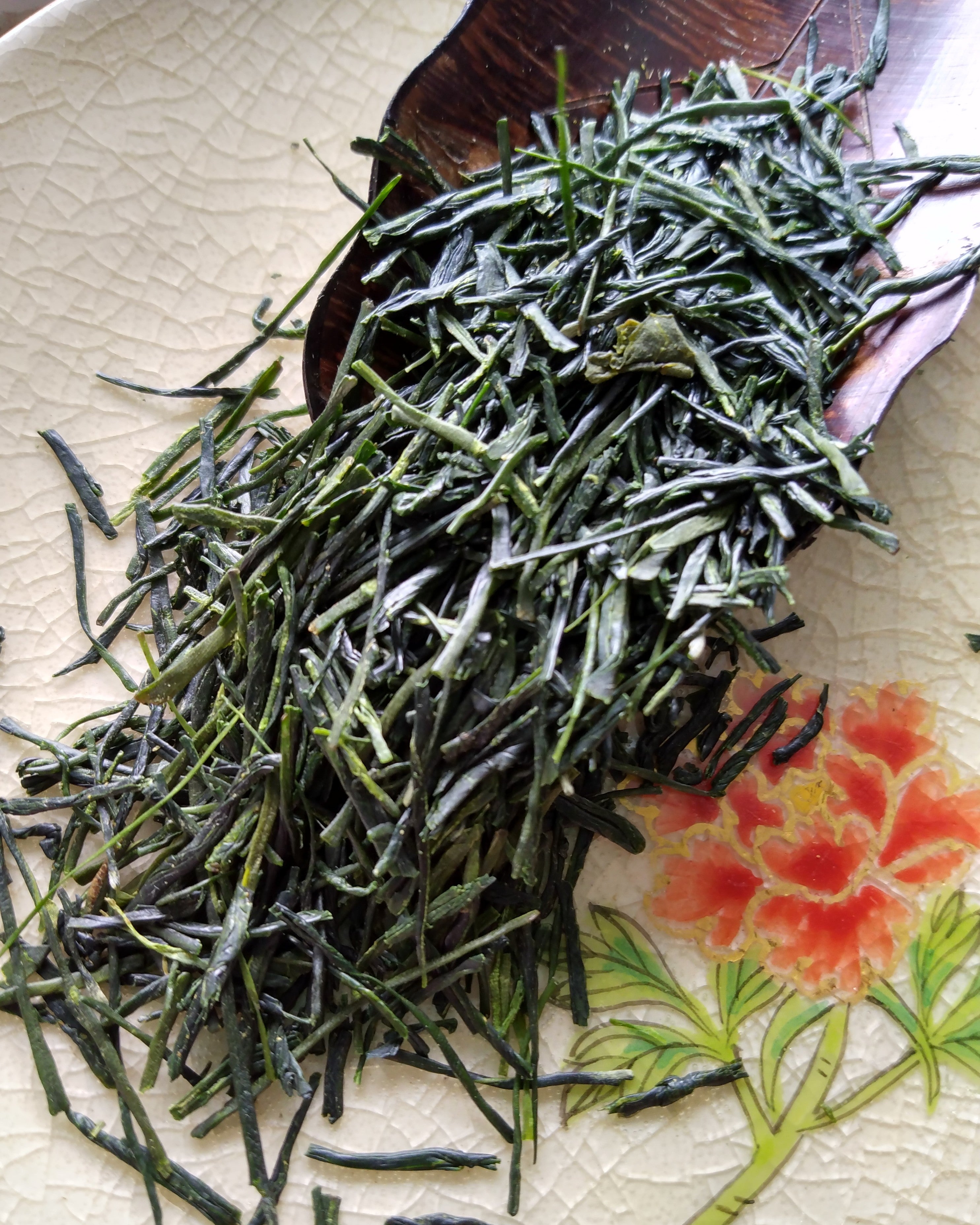Description
Kouju Japanese Oolong - 2024 Shincha (New Harvest Tea)
Origin: Honyama, Shizuoka Prefecture
Cultivar: Kouju
Infuses to a golden-colored broth with a slightly woodsy aroma from the roasting process. Nice mouthfeel on the first infusion, which thins a bit on latter infusions but the flavor opens more. There are slight grassy green tea notes, expected from a Japanese Oolong, but also sweet notes like plum and melon. There is a slightly astringent (shibumi) finish, but it is balanced with the sweetness (amami) of the brew. And, as with most Oolong, this tea can yield mutiple infusions (6-7) beyond that of a Sencha (typically 3-4), making it a good value.
Japanese Oolong is a relatively new tea on the market, but roasting tea and withering tea are certainly not new techniques to Japanese tea growers and manufacturers. The Kouju cultivar is fairly rare, only grown around the Motoyama region of the upper Warashina River, a well-known tea growing area of Shizuoka Prefecture. It's believed to be a natural hybrid of a Japanese variety and an Assam variety. According to the farmer, the leaves are carefully picked when they are dark green and covered with fine silver hairs to make these special Oolong teas.
The Honyama region of Shizuoka is in the northern part of the prefecture, containing the Abe River and the it's branches of the Ashikubo and Warashina Rivers, and near the foothills of Mount Fuji. Suruga was the old provincial name of current Shizuoka, and the aroma of tea is everywhere in Suruga, and must have been for some time as this poem of Matsuo Basho (1644-1694) recounts, "Suruga road / Even the mikan (orange) blossoms / Smell of tea bushes".
Shizuoka is Japan's largest growing tea region, producing nearly half of the country's tea output. The history of tea in Shizuoka goes back to the Kamakura Period when tea seeds, along with the seeds of Zen Buddhism, were brought from Song China by the monk Enni in 1241 and planted them in the Ashikubo area. During the Tokugawa Era (1600-1869), local lords increased commercial cultivation of tea to bolster the region's economy and their feudal coffers. Even in the late 1800's, Shizuoka was a large exporter of tea. Tea farming is spread across the prefecture, much of it with the beauty of Mount Fuji in the background. To the east lies the coast and the Pacific Ocean, and with many river valleys, growing conditions in Shizuoka are ideal for tea. With both a long history and an ideal environment, Shizuoka has long been a leader in tea agricultural science and technology.


